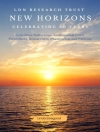Reflexology is a form of complete healing that can detect and correct energy imbalance and restore balance to the body by relating each zone of the body to different points on the hands and feet.
This introductory guide covers the theory on which reflexology is based, as well as its history, and the principles of practice. The author includes an description of how treatment works and how it is given, a guide to the reflex areas and their relationship to the rest of the body, effective reflexology treatments and case studies, reflexology as a preventative therapy and how to find a reliable reflexologist.
This will be an enlightening guide for anybody interested in what reflexology has to offer and for those wanting to learn more about therapies that present alternatives to traditional treatment. Students and practitioners of reflexology and related practices will find it a useful reference, and a perfect introduction to recommend to clients.
Inhoudsopgave
Acknowledgements. Introduction. 1. What is Reflexology?. 2. How the Treatment Works. 3. How the Treatment is Given. 4. The Reflex Areas. 5. What Reflexology is Most Effective in Treating. 6. Case Histories. 7. Reflexology as a Preventative Therapy. 8. Finding a Reliable Reflexologist. Useful Addresses Index.
Over de auteur
Nicola Hall has been Director of The Bayly School of Reflexology since 1980 and is the Chair of the British Reflexology Association. She is one of the leading authorities on reflexology in the UK. She has written several books on reflexology and has contributed to complementary medicine books and articles as well as appearing on television and radio. She lives in Worcester, UK.












